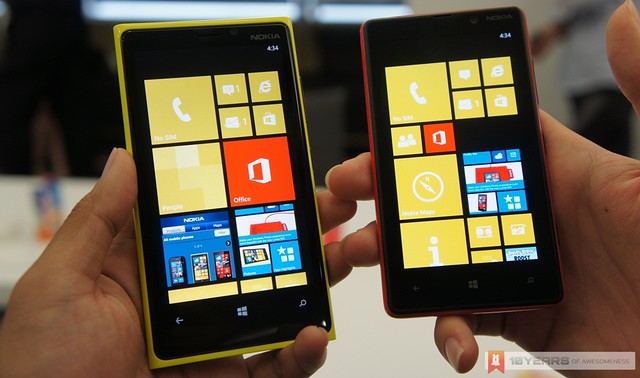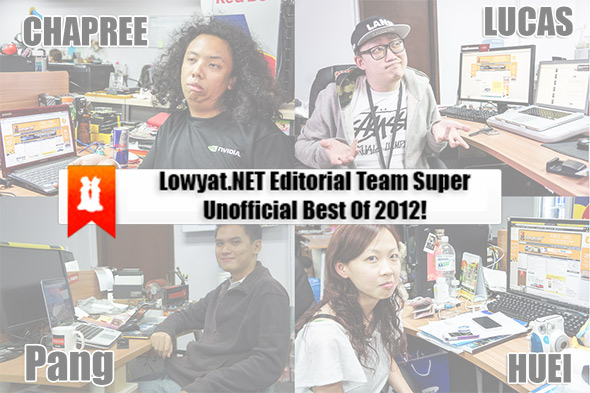We have come to the end of our list of the best of 2012 and what a ride it has been. From all of us at the Editorial Team, have a great 2013 guys and here is to more amazing and not-so-amazing stories in the year to come! Today we look at the overall biggest news that is still fresh in our minds.
Article Continues After The Jump!
Read the other parts of the Super Unofficial Best Of 2012!
Part 1: Game Of The Year
Part 2: Super Awesome Random Thing Of The Year
Part 3: Mobile Device Of The Year
Part 4: Meme Of The Year
Part 5: Flop Of The Year
Part 6: YouTube Video Of The Year!
Pang: Jolla Mobile’s Unwavering Belief on a “Burning Platform”
[youtube width=”550″ height=”300″]tRZxM9rNyZ4[/youtube]
Nokia CEO Stephen Elop’s leap of faith in 2011 meant that the company had to take some unpopular decisions. Among them was to end development on Nokia’s in-house operating system, MeeGo. Despite pledging support for its only MeeGo device, the N9, up to 2014, the entire MeeGo team was disbanded in July 2012. That was the end; the dream was over.
Or so many thought. Under the Nokia Bridge program, a group of ex-Nokia employees from the MeeGo team managed to gain some financial aid to establish Jolla Mobile, a startup with admirable ambitions of continuing development on MeeGo and also producing Jolla smartphones running on a MeeGo core.
The company literally picked up where Nokia left off, as it began reviving partnerships made by Nokia back in the MeeGo days. It then developed an entirely new user interface for the platform, before announcing its Sailfish OS, based on MeeGo’s community development project Mer.
What’s interesting is its business model. Similar to Google’s Android, Jolla plans to not only produce Jolla-branded smartphones running on Sailfish OS, but also licence its OS to interested OEMs in its bid to spur the Jolla ecosystem. The company will also go a step further than Android by releasing the source code for the entire OS to the public – unlike Android, where certain parts of the code is off-limits. Whether this works out for the better remains to be seen.

In November, Jolla finally unveiled the Jolla UI at Slush 2012, the largest conference for startups in Northern Europe and Russia. The sight of the entire Jolla team nervously on stage (most of them were used to being in front of a computer, not a huge crowd staring back at them) was one unlike any other conferences I’ve seen. Some presentations were even given by nervous Jolla engineers, which gave a very human touch to the company’s efforts – you can’t help but admire the team’s unwavering belief on the platform, and the lengths they have gone to keep it alive.
Jolla is expected to announce its first Jolla smartphone – as well as the Jolla software development kit (SDK) – sometime this quarter, before putting the Jolla phone on the market in Q2. With 2013 seeing the debut of a minimum of four new mobile operating systems (BlackBerry 10, Sailfish OS, Ubuntu Phone OS, Tizen, and possibly even Firefox OS), 2013 will be unlike others, as it looks to be a very interesting one on the mobile front.
Lucas: The journey of Nokia PureView Technology so far

One of the most exciting pieces of news this year for me as a photographer was definitely the announcement of the Nokia Pureview technology in the 808. I’ll be the first to admit that I was incredibly critical of it when it was announced. The combination of 41MP on such a small sensor and dated phone OS didn’t sit right with me. I wrote a couple of articles on it along with an apology for screwing up on the understanding on what the technology actually was.
The more I thought about it, the more it dawned on me that the PureView technology was actually quite incredible. I had become a believer in the technology, but still not in the software and everything that made it a phone. Nokia Belle was just not the OS for such an amazing camera. This was further made true when I got my hands on a PureView 808 to test, very much later in the lifespan of the device. To me, it was a camera with phone functions and not the other way around. The pictures were amazing, but it was bulky and the software was dated. It was a crying shame.

The dawn of the Nokia Lumia 920 brought about the next iteration of the PureView which would change things for the better. This time, the unwieldy 41MP technology was missing and drew many questions from fans and critics alike. Was this really a PureView device? Could we even call it that? Nokia came out to say that indeed it was the improved imaging technology that was “PureView” and not just that 41MP monster. After the demo of the low light features of the 920 and this new PureView, most of the doubts were put to rest. The low light imaging was certainly something that all most could agree was pretty fantastic for a phone.
Despite being marred by the whole scandal of staging the “sample shots” and recording the stabilized video with a DSLR, it doesn’t take away from the fact that PureView has potential to blow the competing mobile camera tech clean out of the water, if it doesn’t do so already. The future is bright for the Nokia PureView tech and I’m excited that I will be around to see it.
Huei: Story of 2012: How Facebook Spent USD$1 Billion on Instagram and Does Nothing With It

Who would’ve thought that a photo sharing website like Instagram could get so big in 2012 that Facebook was willing to spend USD$1 billion just to buy up the 2-year old company? In April last year, Facebook spent that huge sum of money just to snag up Instagram, which had a team of only 9 staffs back then.
At that time, Mark Zuckerberg said that it’s so users can get the “best experiences for sharing beautiful mobile photos with people based on your interests” but what has Facebook done with Instagram for the rest of the year? Well, pretty much nothing, Instagram still does what it has always been doing – allows you to take images, crops them to a 4:3 aspect ratio, do some simple edits like adding a filter, and put on a caption before sharing out the picture on your Instagram account. The Facebook integration will then post the update to your Facebook Timeline.
Now here’s the best part, not too long after spending such a huge sum of money on Instagram, Facebook then created its own camera app to make sharing and viewing your Facebook friend’s photos much easier and faster. As though that’s not enough, the company soon released an update to its Facebook app for iOS that allows users to do what they have been doing on Instagram – edit the pictures, crop it, and add a filter. This, mind you, is a completely different feature from Instagram.
Meanwhile over at Instagram, the company soon removed integration with Twitter, forcing all Twitter users to open the Instagram image link instead of viewing it directly on Twitter. Facebook and Instagram then ended 2012 with a whole big dramatic issue over privacy and how Instagram “can sell your images”. Of course, the Instagram team then responded by telling users that they have no plans to sell user images before reverting the terms and conditions back to the old deal.
Facebook and Instagram sure made it big in 2012…to be continued…
Follow us on Instagram, Facebook, Twitter or Telegram for more updates and breaking news.


